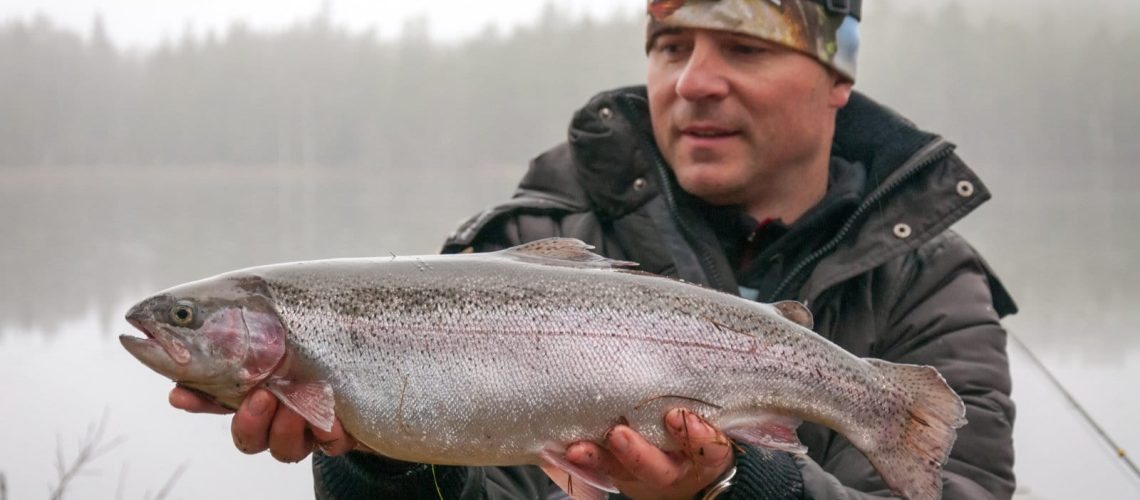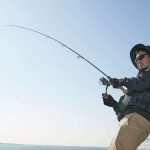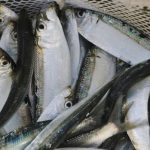Steelhead and Salmon are popular targets for anglers everywhere because they grow large and are delicious. People prefer bigger catches that are easy to find. But for the expert fishermen, Steelhead is a gem to catch, especially using spinners. So, how do you fish for Steelhead with spinners? Read on to know-how.
Despite their similarities in habitat, they differ significantly in terms of lure presentation. Steelhead will spawn and leave the river every year to return to their preferred feeding waters. Because of this, Steelhead trout will continue feeding and will often strike aggressively because of hunger. This makes them easy to catch using spinners.
Are spinners the best for catching Steelhead?
Steelhead trout like fast-flowing rivers. Spinners are the best option for catching steelheads up to depths of five feet. Spinners are the most effective since the Steelhead is usually attracted to very bright spinners with high vibration.
To catch Steelhead, you should use large spinners of size nine to 18 for turbid water and smaller sizes for clear water.
Steelheads are often found on rivers with powerful currents, and they will hide in pockets like behind rocks or creeks where the current is diverted. To maximize your time in your targeted strike zone, you should ensure that your spinner stays at the bottom.
An angler will have a better chance of catching Steelhead if they master the cast and swing method. This entails casting your spinner slightly upstream, allowing it to drift gently in with the river flow, and then swinging it towards the bank.
How to Catch Steelhead with Spinners
Recently more anglers are engaging in steelhead fishing. It has become so popular that you are likely to find anglers sharing strike zones. The process of fishing steelheads has considerably evolved, contributing to a pleasurable fishing experience. Here is how to catch Steelhead using spinners.
1. Choose a Strike Zone
Steelhead does not have arms, so they will strike hard to eat their prey. This is why spinners are the best bait for Steelhead. As the water rapids flow downstream, the spinner will spin and vibrate visibly to the Steelhead.
The best strike zones are the water pockets behind rocks and creeks. As the water rapidly moves against the obstacles, it provides a suitable habitat for steelheads.
2. Throw the Spinner Upstream and Let it Flow
Next, throw the spinner upstream and let it flow slowly downstream along the river. As it moves, the spinner will hit the bottom of the river. This is the best point for the Steelhead to strike.
3. Allow Room to Bank Anglers
For anglers using a boat, there should be enough space between the boat and the anglers on the bank. Ensure that you don’t anchor at the center of the hole. This is to allow bank anglers to have a chance to fish.
4. Always Keep Your Bait Near the Bottom
For a better catch of steelheads, you should cover water efficiently by keeping the lure at the bed of the river. Then gradually move downstream until you cover the entire run.
5. Spend More Time at Every Pocket
When you are unsuccessful on the first, second, or even third cast, do not move too soon. It would help if you spent more time at that point in the water. By so doing, you will understand the river and master the spinner technique that will work for you.
By fishing patiently from one pocket, you will catch more steelheads moving faster from one pocket to the other.
Frequently Asked Questions
1. Which rod is best for catching Steelhead?
Steelhead rods are usually light and very sensitive compared to those used for Salmon. The best multi-purpose rod will be an 8.5-footer that is rated at an eight to 12-pound test line. If you have experience in fishing, then you may prefer the spinning setup.
Other special rods exist for various fishing techniques like bobber or jib, fly-fishing, and pulling plugs. If you are looking to buy a steelhead fishing rod, there are a few things you should think about, including:
• The most common type of fishing you will engage in, e.g., drift fishing, pulling plugs, or plunking
• Bait size that you will cast
• The reel type that you will use, for example, spinning or baitcasting
• Line size
• The length of your rod. This is important when you are casting on streams with busy banks.
• Consider the warranty period offered
2. Do Steelhead see colors?
Steelhead prefers dark colors. Nonetheless, fluorescent colors play a significant role in luring Steelhead to the bait. Colored spinners are the best, especially in clear water under bright light conditions. Fluorescent spinners will not fluoresce without sufficient direct sunlight.
Therefore, when choosing your strike zone, stay away from bushes. The shadow cast by bushes on the water will reduce the visibility of your spinnerbait.





